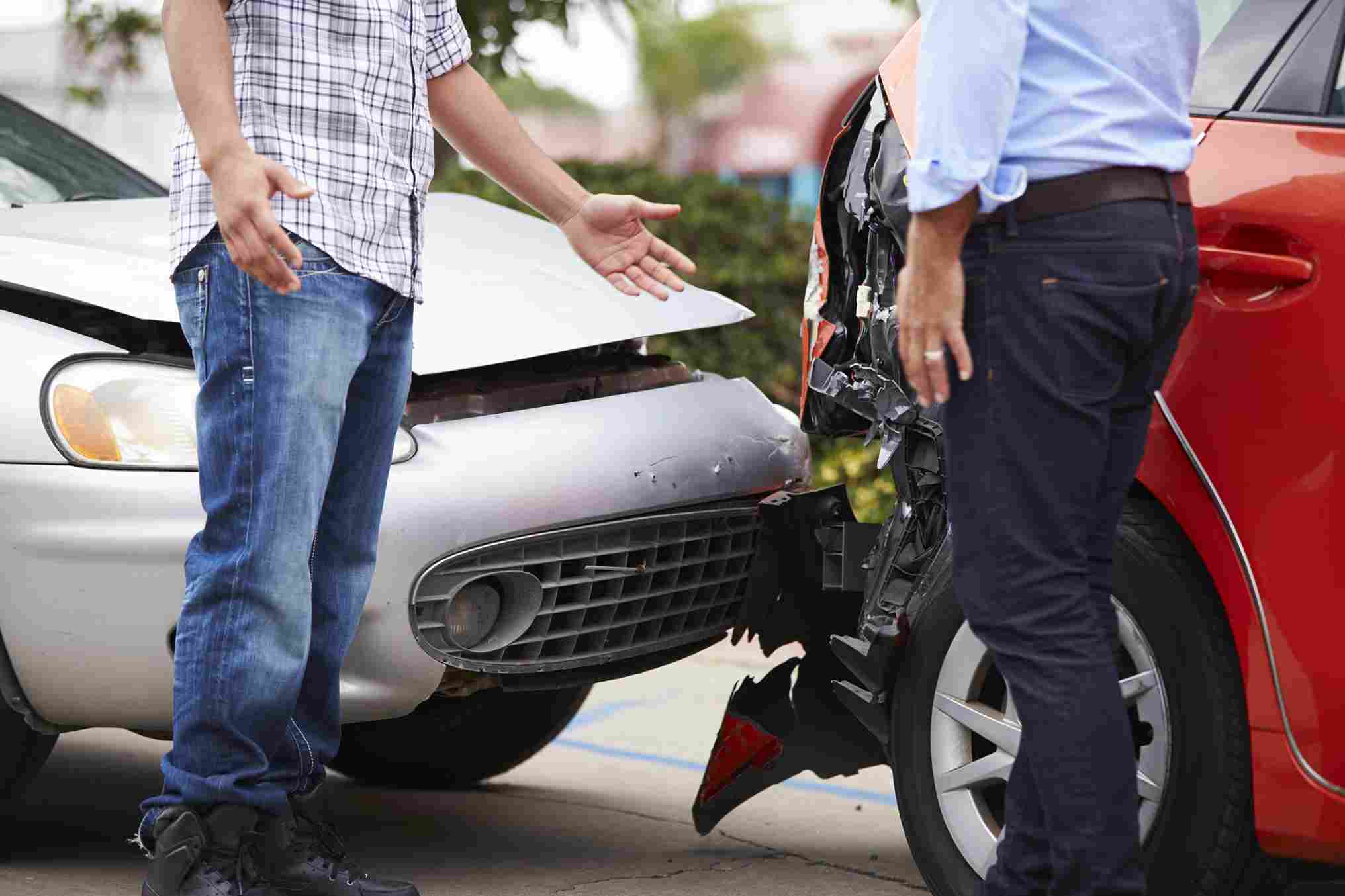
- Vaughn A. Wamsley
- Car Accidents
When a crash happens, the question is rarely “who was 100 percent at fault.” Indiana law recognizes that several people can share responsibility for the same collision. That is where comparative fault comes in.
In this guide, our team explains how percentages of fault are assigned, how they change the money you can recover, and what strategic steps protect your case. We write from the perspective of a car accident lawyer in Indianapolis who has helped thousands of Hoosiers rebuild after serious crashes.
Our firm’s record includes results in the millions and decades of experience serving accident victims throughout Central Indiana.
What “Comparative Fault” Means In Indiana
Indiana follows a modified comparative fault system with a 51 percent bar. In plain terms, your compensation is reduced by your percentage of fault. If your share of fault is greater than 50 percent, you cannot recover. The rule is codified in the Indiana Comparative Fault Act.
The statute also directs judges and juries to consider the fault of everyone who caused or contributed to the harm, including nonparties that are not in the lawsuit. This framework keeps the focus on fair apportionment rather than an all-or-nothing outcome.
How Percentages Of Fault Are Assigned
At trial, the fact-finder assigns each responsible person a percentage that totals 100. The court then reduces your damages by your percentage. If the case is tried against one defendant, the instructions still require the jury to weigh the fault of others who contributed to the crash, including nonparties.
Example: If a jury values losses at $300,000 after a rear-end collision and assigns you 20 percent fault for following too closely, the court enters judgment for $240,000. If your percentage rose to 55 percent, recovery would be barred. This result follows directly from the Act’s 51 percent rule.
Nonparty Defenses And Why They Matter
Indiana’s Act lets defendants blame nonparties. The defense must be pled with specificity, and there are timing rules.
If a defendant is served more than 150 days before the statute of limitations runs against a potential nonparty, the nonparty defense must be pled no later than 45 days before the limitations period expires. Otherwise, the defense must be raised with reasonable promptness after discovery. Courts can strike late or vague nonparty pleadings.
Our litigation team moves quickly to identify and rebut nonparty allegations with evidence such as dash-cam video, phone records, crash data, and witness statements.
What Counts As “Fault” Under Indiana Law
Indiana defines fault broadly for comparative fault purposes. It includes negligent, willful, wanton, reckless, or intentional conduct, plus certain concepts like unreasonable failure to avoid an injury or to mitigate damages. This definition explains why defense lawyers argue about seat belts, treatment gaps, and post-crash choices.
New Seat Belt Evidence Rule You Should Know
For crashes on or after July 1, 2024, Indiana allows limited evidence that a plaintiff age 15 or older was not using a required restraint. This evidence may be used to show failure to mitigate damages. It is not used to decide who caused the crash. Expect insurers to invoke this rule, which appears at Indiana Code 9-19-11-8.5.
If the other side raises seat belt nonuse, we counter with medical experts, crash biomechanics, and proof that injuries would have occurred regardless of restraint status. We also emphasize that fault for the crash remains a separate inquiry.
Important Exception: Claims Against Government Entities
The Comparative Fault Act does not apply to tort claims against governmental entities or public employees under the Indiana Tort Claims Act. Those claims follow different rules and defenses. The statute expressly excludes government cases from the Act’s framework.
Practically, that means a person’s negligence can operate as a complete bar in certain government cases, and strict notice deadlines and statutory damage caps apply under the Tort Claims Act. If your crash involved a city vehicle, an INDOT crew, or another public entity, talk to our team immediately so we can preserve your rights under those separate rules.
How Comparative Fault Plays Out In Real Crashes
Rear-End Collisions In Stop-And-Go Traffic
Courts often presume the rear driver is at fault, but percentages can shift if the lead driver braked suddenly without reason, had malfunctioning brake lights, or merged aggressively. We gather EDR data, scene video, and witness accounts to address the following distance and reaction time.
Left-Turn And Intersection Crashes
Left-turning vehicles must yield to oncoming traffic. Fault can still be shared if the approaching driver was speeding or ran a red light. Camera footage, signal timing data, and skid analysis help refine the percentages.
Multi-Vehicle Pileups
Juries apportion fault among several drivers. The Act permits consideration of nonparties that are not present, which makes early investigation crucial so the right actors are before the court.
Pedestrians, Cyclists, And Motorcyclists
Insurers sometimes over-assign fault to vulnerable road users. Indiana’s definition of fault looks at reasonableness under the circumstances. We pair visibility studies with witness testimony and roadway design documents to prevent unfair allocations.
Insurance Strategies And How We Respond
Adjusters use comparative fault to reduce payouts. Common tactics include:
- Overstating your speed or distraction without proof.
- Suggesting a nonparty driver cut you off without identifying the person.
- Pointing to gaps in medical care as “failure to mitigate.”
Indiana law puts the burden of proof for a nonparty defense on the defendant, and the defense must be adequately pled. We hold insurers to those requirements while building a fact-rich record that makes low-percentage fault assignments stick.
Evidence That Moves Percentages In Your Favor
- Police Reports, 911 Audio, and Body-Cam Video. These capture how drivers behaved moments after the crash.
- Dash-Cam and Event Data Recorder (EDR). Objective speed and braking data often undercut speculation.
- Scene Photography and Measurements. Lane position, yaw marks, and debris fields show the mechanics of impact.
- Phone and App Data. Records can confirm or refute distraction claims.
- Medical Proof and Biomechanics. Causation and injury progression matter when the defense argues mitigation or preexisting conditions.
As a car crash attorney in Indianapolis, we assemble this material quickly so your side of the story is clear and persuasive.
How Your Percentage Of Fault Changes The Payout
Use these simple illustrations to visualize the math:
- 20 Percent Fault: Jury verdict $250,000. Net recovery $200,000.
- 50 Percent Fault: Jury verdict $250,000. Net recovery $125,000.
- 51 Percent Fault: Recovery barred.
These outcomes flow from the Comparative Fault Act’s text and jury instruction framework. A few percentage points make a six-figure difference, which is why a detailed investigation is essential.
Frequently Asked Questions
What If I Was Partly At Fault?
You may still recover if your percentage is 50 percent or less. Your share reduces your award. If your fault exceeds 50 percent, recovery is barred. We focus on evidence that keeps your percentage low.
What If Multiple Drivers Were Responsible?
Indiana juries consider the fault of everyone who contributed to the crash, including nonparties. Defendants must plead nonparty defenses properly and on time. We push to exclude improper nonparty designations and to join the truly responsible actors.
Will Not Wearing A Seat Belt Ruin My Case?
For post-June 30, 2024 crashes, nonuse may be considered for mitigation of damages, not for deciding who caused the collision. We address this with expert testimony and medical proof.
What Is The Deadline To File A Lawsuit?
The general statute of limitations for personal injury in Indiana is two years from the date the claim accrues. There are exceptions, and government cases have separate notice requirements. Speak with an attorney right away after any serious crash.
How We Protect Your Case Under Comparative Fault
As an Indianapolis car wreck lawyer team, we apply a disciplined process that includes:
- Immediate Intake And Fact Development. We capture your account, preserve vehicles and electronics, and identify witnesses before memories fade.
- Scene And Data Workup. We secure EDR data, roadway measurements, and any available video.
- Medical Causation And Forecasting. We coordinate with treating providers and, when needed, retained experts.
- Nonparty Defense Management. We challenge untimely or speculative nonparty allegations under the Act’s pleading rules.
- Resolution Strategy. We present a transparent, evidence-based fault allocation and a damages model that accounts for future care and wage loss.
Our website outlines our results, our 24-7 consultations, and our Central Indiana footprint. We invite you to review our background and track record to see how we can help after a serious crash.
Practical Steps After A Crash In Indianapolis
- Get Medical Care Immediately. Early evaluation protects your health and documents causation.
- Document Everything. Photograph vehicles, lanes, signals, and injuries. Save dash-cam clips.
- Avoid Speculation. Give facts to the police, but do not guess about speed or fault.
- Preserve Digital Evidence. Keep phones, apps, and vehicles unchanged so data can be retrieved.
- Call A Lawyer Early. Comparative fault arguments start at the claim stage. Early help prevents damaging statements and preserves critical proof.
If your matter involves INDOT, a city, or a school district, contact us promptly to address Tort Claims Act notices and strategy.
Why Choose Our Firm
- We have helped 10,000 accident victims and recovered over $100 million across Indiana.
- We offer free consultations and no fee unless we win.
- Our office is located at 851 S Rangeline Rd, Carmel, IN 46032, serving clients throughout the Indianapolis area.
When you search for a car crash attorney in Indianapolis, you deserve a team that understands how a few percentage points can decide a case. We bring the resources, the investigation, and the advocacy to put those percentages on your side.
Call For A Free Case Review
Comparative fault is a powerful tool for insurers. It can also be an opportunity for your legal team to show the truth about what happened.
If you were injured in a collision anywhere in Central Indiana, speak with an experienced car accident lawyer in Indianapolis today. Our attorneys will evaluate your case, protect you from unfair blame, and pursue the full value of your claim.



